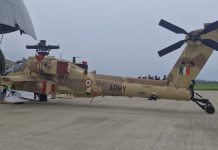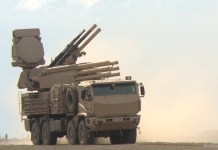The pride of the United States Navy and one of the oldest aerial aerobatic teams in existence, the famous Blue Angels need no introduction.
On November 4th, 2020, the team bid adieu to their legacy F-18 Hornet aircraft and performed their ‘sundown’ flight, over their home base at Pensacola, Florida, just before the sunset.
The squadron operated F/A-18 Hornets since their induction in November 1986 and will transition to the newer F/A-18E/F ‘Super Hornets’ in the coming days.
“As we prepare to officially transition to the F/A-18 Super Hornet tomorrow, we reflect on 34 years of Blue Angels who have flown, maintained and supported the F/A-18 “Legacy” Hornets across the United States. We take with us lessons learned, camaraderie and fond memories,” the service wrote on their Twitter account.
As we prepare to officially transition to the F/A-18 Super Hornet tomorrow, we reflect on 34 years of Blue Angels who have flown, maintained and supported the F/A-18 "Legacy" Hornets across the United States. We take with us lessons learned, camaraderie and fond memories. pic.twitter.com/EJ7D7M0dI6
— Blue Angels (@BlueAngels) November 3, 2020
The team would head to its winter training grounds at Naval Air Facility (NAF) El Centro in Southern California in January, where they would be training to perfect their new birds.
The Super Hornets are a bit larger than their predecessors and are largely a new aircraft and the F-18 designation was retained to help sell the program to Congress as a low-risk “derivative”.
A total of 16 officers voluntarily serve with the Blue Angels. Each year the team typically selects three tactical (fighter or fighter/attack) jet pilots, two support officers, and one Marine Corps C-130 pilot to relieve departing members.
The Blue Angels’ mission has been described by the US Navy “to showcase the pride and professionalism of the United States Navy and Marine Corps by inspiring a culture of excellence and service to country through flight demonstrations and community outreach.”
“For many of us who grew up watching the Blue Angles in their iconic Legacy Hornets, the introduction of which marked a big boost in performance over the A-4 Skyhawks they had before, this is a bittersweet moment.
Still, a new demo that takes full advantage of the Super Hornet’s unique capabilities, and some newer and more maintainable jets for the team, is a welcome development indeed,” writes Tyler Rogoway, a renowned aviation specialist.




